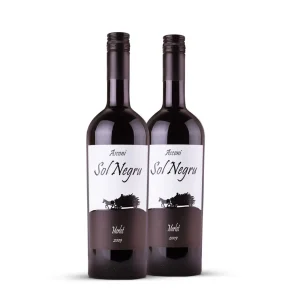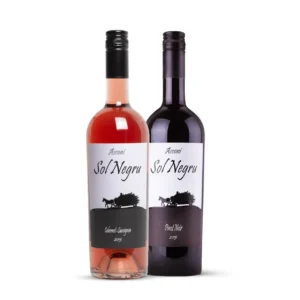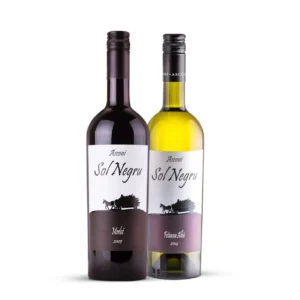🎁 Buy 6 Bottles, Get 6 FREE
How Many Calories in a Bottle of Red Wine?

Wine is a popular drink enjoyed worldwide, known for its rich flavours and traditions. With growing health awareness, knowing the nutritional value of wine, especially its calories, is important. So, how many calories in a bottle of red wine? This guide will help wine lovers make informed choices.
What Determines Caloric Content in Wine?
Alcohol Content
The primary factor contributing to the caloric content of wine is its alcohol content. Alcohol contains 7 calories per gram, which is nearly twice the caloric content of carbohydrates and proteins (4 calories per gram). Therefore, wines with higher alcohol content tend to have more calories.
Residual Sugars
Another significant contributor to wine’s caloric content is residual sugar that remains after fermentation is complete. Sweeter wines tend to have more calories due to their higher sugar content. Even dry wines have some residual sugar, which adds to the total calorie count.
Serving Size
Standard serving sizes also play an important role. Typically, a standard glass of wine is about 5 ounces (148 ml). However, when considering an entire bottle, it’s important to multiply the calories per glass by the number of servings in the bottle.
Home is where the wine is.

Caloric Breakdown of Red Wine
– Calories in a 750ml Bottle of Red Wine
As previously mentioned, a standard 750 ml bottle of red wine typically contains approximately 625 calories. However, this estimate can vary depending on the wine’s alcohol and sugar content.
– Calories in a 250ml Glass of Red Wine
A 250 ml serving, often referred to as a “large glass,” is a generous pour of red wine. Given that a full bottle (750 ml) contains about 625 calories, a single 250 ml glass would contain roughly 208 calories. This amount is more than one-third of the total calories in the bottle.
– Calories in a 175ml Glass of Red Wine
Another common serving size is 175 ml, known as a “medium glass.” In a typical 750 ml bottle of red wine, this translates to about four servings. Consequently, a 175 ml glass contains approximately 146 calories, making it a popular choice for those who want to enjoy wine in moderation.
– Calories in a 125ml Glass of Red Wine
A 125 ml glass, often referred to as a “small glass,” contains fewer calories, making it a suitable option for those mindful of their intake. In a standard 750 ml bottle, this equates to about six servings. Therefore, a 125 ml glass of red wine would have around 104 calories.
Popular Varietals
- Cabernet Sauvignon: A 5-ounce serving of Cabernet Sauvignon has about 123 calories. Therefore, a full bottle contains around 615 calories.
- Merlot: Merlot averages about 122 calories per 5-ounce serving, making it about 610 calories per bottle.
- Pinot Noir: This lighter red wine has roughly 121 calories per serving, translating to approximately 605 calories per bottle.
👉 These are just averages — you can explore our full dry red wine collection to find wines that suit your taste and lifestyle.

What Type of Red Wine Contains the Most Calories?
Fortified Wines
Among the red wines, fortified wines like Port, Madeira, and Sherry are typically the most calorically dense. These wines are fortified with additional alcohol, leading to a higher overall alcohol content and, hence, more calories. For instance, a 3.5-ounce (100 ml) serving of Port can contain around 150 calories, significantly higher than the same serving size of a standard red wine.
Zinfandel
Zinfandel is another red wine known for its elevated calorie content. This variety often has higher alcohol levels, ranging between 14 to 17 per cent, compared to other red wines that average around 12 to 14 per cent. As a result, a 5-ounce serving of Zinfandel can have approximately 130-140 calories.
Syrah/Shiraz
Syrah, also known as Shiraz in some regions, is a robust red wine with a higher alcohol content. This translates to a higher calorie count, with a 5-ounce serving containing roughly 125-130 calories. The rich, bold flavours of Syrah often come with the trade-off of added calories.
How Red Wine Affects Weight
Caloric Intake
While moderate red wine consumption can be part of a balanced diet, it’s important to understand how it can affect weight management. The calories in red wine can add up, especially when consumed frequently or in large quantities. Unlike calories from nutrient-dense foods, the calories from alcohol provide little nutritional value, often referred to as “empty calories.” This means that while you’re burning calories, you’re not getting essential nutrients, which can contribute to weight gain if not offset by physical activity.
Metabolism
Alcohol can also affect the body’s metabolism. Drinking wine can temporarily slow fat burning because the body prioritises metabolising alcohol over other nutrients. This means that the calories from wine, as well as any other food consumed while drinking, are more likely to be stored as fat.
To enjoy red wine healthily, it’s best to do so in moderation and be mindful of your overall calorie intake and diet quality. Choosing smaller portions and savouring the wine can enhance the experience and contribute to mindful consumption without upsetting the caloric balance.

Tips for Enjoying Red Wine in a Healthy Way
Moderation is Key
Aim for moderate consumption, defined as one glass per day for women and up to two glasses per day for men. This will allow you to enjoy the benefits without the negative health effects of excessive drinking.
Mind Your Portions
Be mindful of portion sizes. To help you control your portions, use a wine glass with a clearly marked 5-ounce line.
Stay Active
Balance your wine consumption with regular physical activity. This will not only help you manage your calorie intake but also improve your overall health.
Pair with Healthy Foods
Enjoy red wine with nutrient-rich foods. Pairing wine with a balanced meal can help mitigate the potential negative effects on weight and metabolism.
Choose Wisely
Choose wines with lower alcohol content and less residual sugar to keep your calorie intake in check. Dry red wines often have fewer calories than their sweeter counterparts.

Personal Experience 🙂
On my journey to mindful red wine consumption, I’ve had both successes and setbacks. In my mid-20s, I didn’t realise how the calories from my nightly glass of wine were adding up. I noticed a gradual weight gain and eventually connected it to my drinking habits. That was an important learning moment. I educated myself about the calories in wine and was surprised at the impact one glass could have.
A success story I cherish is learning to enjoy wine in a more health-conscious way. By sticking to one glass a day and exercising regularly, I found a balance that kept me fit while still enjoying red wine. This change improved my physical health and made me appreciate wine more. Savouring each sip became a nightly ritual that I looked forward to.
But there have been setbacks. During one busy month, I stopped exercising but continued to drink wine. It was a humbling reminder that drinking in moderation must be paired with other healthy habits, such as eating right and exercising. These experiences shape my approach to red wine and help me enjoy it responsibly as part of a balanced and healthy lifestyle.
How to Calculate Red Wine Calories
Step-by-step guide to calculating calories in any wine
Understanding the calorie content of your favourite red wine can help you make more informed decisions about your consumption. Here’s a step-by-step guide to help you calculate the calories in any wine:
- Check the Alcohol Content: Locate the alcohol by volume (ABV) percentage on the wine label. This information is crucial as it largely determines the calorie content.
- Determine the Serving Size: Standard wine servings are typically measured in 5-ounce portions. Knowing the serving size will help you make accurate calculations.
- Calculate the Alcohol Calories: Use the formula: (ABV% × 1.6 × ounces in serving size = calories from alcohol). For example, if the wine has an ABV of 13% and the serving size is 5 ounces, the calculation would be (13 × 1.6 × 5 = 104 calories from alcohol).
- Consider Residual Sugar: Some wines, especially sweeter varieties, contain residual sugars, which add to the calorie count. You’ll need information on the grams of sugar per litre, which can be found on the bottle or the winery’s website. Convert the grams of sugar to ounces (1 gram = 0.035 ounces) and multiply by 3.87 to get the calories from sugar.
- Add It Up: Combine the calories from alcohol and the calories from sugar to get the total calorie content of your serving. Using our example above and assuming the wine has 2 grams of residual sugar per serving, the calculation would be 2 grams × 0.035 = 0.07 ounces × 3.87 = 0.27 calories from sugar. Therefore, 104 + 0.27 ≈ 104.27 calories.
Tools and resources for accurate calculation
- Online Calorie Calculators: Websites offer easy-to-use online calculators where you can input the ABV, serving size, and residual sugar information to get an instant calorie estimate.
- Mobile Apps: Wine-specific mobile apps include databases of wines along with their nutritional information, making calorie tracking more convenient.
- Nutrition Labels: Some wineries provide detailed nutritional labels on their bottles or online resources that list the exact calorie count based on extensive analysis.
- Consult Winery Resources: If in doubt, winery websites or customer service departments often have detailed nutritional information readily available.
Curious to learn more about wine and its nutritional aspects? Stay tuned to our blog for more insights and tips on making the most of your wine experience. Cheers to informed enjoyment!🥂
Your Wine Questions Answered
The calorie content in a 750 mL bottle of red wine can vary depending on the type and alcohol content of the wine. On average, a 750 mL bottle contains between 600 to 630 calories. This estimation can fluctuate as different varietals and alcohol concentrations will influence the calorie count.





